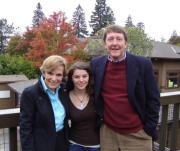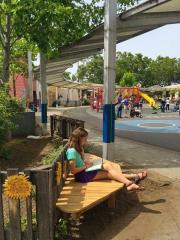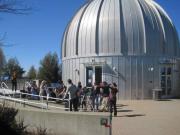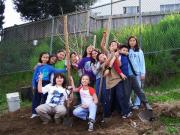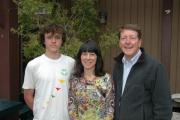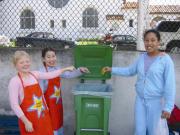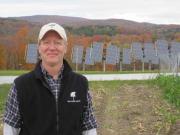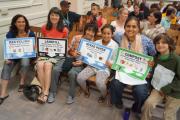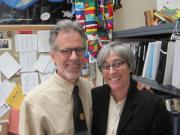Citizen Science: Real World, Hands On Environmental Education
Last fall I joined my friend Alan Fish, director of the Golden Gate Raptor Observatory at the Marin Headlands, to watch the annual hawk migration. Having just read the haunting memoir H is for Hawk by Helen MacDonald about raising a goshawk to help deal with the pain of losing her father, I wanted to see some of these magnificent birds up close. On any given day from August to November, it is possible to see hundreds of raptors--Red-Tailed and Sharp-Shinned Hawks, Peregrin Falcons, Northern Harriers and Turkey Vultures--as they funnel over the narrow Golden Gate on their way south. Since founding GGRO in 1985, Alan Fish, who has a background as an evolutionary and conservation biologist trained at UC Davis, has been the ambassador for one of the country’s most successful programs to engage citizens as volunteers to count, band and track hawks.
At the end of my visit, Alan gave me a copy of Citizen Scientist: Searching for Heroes and Hope in an Age of Extinction (2016), by Mary Ellen Hannibal. “I think you will enjoy reading this,” Alan said, “it will give you a broader understanding of the whole citizen science movement.” When the recent issue of the Green School National Network GreenNotes, which focused on citizen science in schools, arrived in the new year, I was sure this book would be an invaluable resource for all environmental educators. As GGNN executive director Jenny Seydel wrote in GreenNotes, citizen science engages non-scientists, including K-12 students and teachers, to collect data that “informs a larger, science-based research project” and helps “professional scientists gather data on a wide range of topics, from climate and weather to birds, bees and butterflies.”
 Mary Ellen Hannibal has written a magnificent, engaging, and inspiring account of the citizen science movement that puts our formal education initiatives in a broad context. Hannibal herself is a highly-regarded writer based in San Francisco who has focused on issues of science, the environment and climate change for the past two decades. The recipient of numerous awards for her science writing, she is currently a Media Fellow at Stanford University.
Mary Ellen Hannibal has written a magnificent, engaging, and inspiring account of the citizen science movement that puts our formal education initiatives in a broad context. Hannibal herself is a highly-regarded writer based in San Francisco who has focused on issues of science, the environment and climate change for the past two decades. The recipient of numerous awards for her science writing, she is currently a Media Fellow at Stanford University.
Hannibal gives us an account of citizen science that is breathtaking in its scope, spanning the history of natural science from Aristotle and Darwin to Muir and E.O. Wilson. She anchors her narrative in the San Francisco Bay Area, illustrating the important role that a “sense of place” plays in deepening our understanding and love of nature. Hannibal shows the key role our regional universities—UC Santa Cruz, UC Berkeley, and Stanford--have played in fostering citizen science projects. And she tells the story of the California Academy of Sciences as a leader of citizen science initiatives; founded just after the Gold Rush, CAS is now housed in a new LEED Platinum science center, and is one of the foremost informal environmental education resources in the country.
Of special interest to me were all the personal connections Hannibal’s book helped me make among the many of citizen science projects in California she describes. In reading about Fern Watch, for example, I learned that the effort to understand the impact of climate change on the Redwoods includes an initiative at the Chabot Space and Science Center in the East Bay Regional Parks where I am on the board. Her description of the “bioblitz” to document species on Marin County’s Mt. Tamalpais gave me new perspective on a place I have often hiked. When she described her work tracking the dramatic collapse of sea stars on the California coast, I gained new understanding of why the tide pools at my beloved Pt. Reyes National Seashore had lost this species in just a few years. As one of the 300 volunteers with the Golden Gate Raptor Observatory, she recounts all the joys, and challenges, of participating in citizen science.
While Hannibal’s narrative in Citizen Science draws on stories from Northern California, the book should serve as a guide to all K-12 educators who seek to involve their students in hands on, real world science. In January I joined a group of students from Oakland Tech High School during our annual Save the Bay clean up and was amazed to see they arrived with iPads in hand to record and track the debris we collected for a citizen science project their teacher had organized. Hannibal’s engaging account of her discovery of natural science in her own backyard will inspire readers to explore the citizen science movement in their own regions and to incorporate the initiatives into the K-12 environmental education curriculum.
This book review appears courtesy of the Green Schools National Network.
